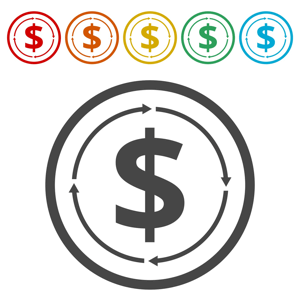Here's a tale of lost and found that'll restore your faith in humanity. A pub in London rallied to find the owner of a packet of wages that had been left on the premises in the run-up to Christmas. And, much to the relief of the internet, the pub jolly well found him!
The Alexandra pub in Wimbledon, south west London, tweeted out a photo of an envelope containing someone named Mariusz's Christmas wages. "Mariusz, we found your pay packet in the Alex on Thursday night," read the tweet. "You haven't lost it, we've got it!"
But, the pub's efforts to reunite Mariusz with his hard-earned cash didn't stop at one tweet.
Mariusz, we found your pay packet in the Alex on Thursday night (21st December). It's stuffed full of cash, you haven't lost it, we've got it! If anybody knows probably a Polish man called Mariusz, near Wimbledon, it could be him. Please tell him! RT in Polish if you know any. http://pic.twitter.com/i3sjOOyJ6t
— The Alexandra (@TheAlexSW19) December 26, 2017
Using the hashtag #FindMariusz, the pub was able to spread the word on social media in the hope of tracking down the owner of this sum of money.
Lets #FindMariusz He dropped an envelope full of cash in the Alex on Thursday night. Do you know somebody called Mariusz? Could it be him? Please tell him and get him to contact us. Lets get the fella his Christmas money back, Polish people please RT in Polish. http://pic.twitter.com/JjjJVyvWAg
— The Alexandra (@TheAlexSW19) December 24, 2017
And the pub spread the word on Facebook.
Rather wonderfully, people all over the country got on board with the hashtag in an effort to find Mariusz.
Mariusz worked hard for this cash ... lost it in a pub just before Christmas. Hope they gwt it back to him #FindMariusz
— Kate Stafford (@kate_bili) December 27, 2017
Thanks to the power of social media—and perhaps a Christmas miracle—Mariusz found out about the mission to reunite him with his cash. On 27 Dec. he strolled into the pub and said, "I'm Mariusz."
OH MY GOD WE'VE GOT HIM!!!!!!!!!!!!!!!!!!!!!!!!!!!!!!!!!!!!!!!!!!!!!!!!!!!!!!!!!!! He's just walked in the sports bar, I've checked the CCTV, and it's him!!! Photo to follow. MARIUSZZZZZZZZZZZZZZZZZZZZZZZZZZ
— The Alexandra (@TheAlexSW19) December 27, 2017
And, here's the man himself, pictured with his cash and the people who strove to reunite him with him.
The pub staff chatted to Mariusz and found out where he'd been during their quest to find him. Turns out he'd gone to Poland for Christmas and didn't tell his wife he'd lost his wages.
Matriusz facts: He DID go to Poland for Christmas. He DIDN'T tell his wide he'd lost the money "I didn't want the stress over Christmas" ??and he works in the building trade. He left a hefty tip for Nobby, & like ALL Polish people, was a brilliant bloke. Filling up here.
— The Alexandra (@TheAlexSW19) December 27, 2017
And, if you're wondering how Mariusz came to find out that his money had been found by kind-hearted strangers, then you're in luck. Mariusz's son saw a post about the #FindMariusz campaign and asked him: "Could this be you Dad?"
We just want to say a HUUUUGE thank-you to everyone who tweeted it, retweeted it, translated it, put zeds into etc. We never had one single fraudulent claim (a couple of jokey ones only) and Mariusz's son SAW IT ON SOCIAL MEDIA, "could this be you Dad?". You did it people!!!
— The Alexandra (@TheAlexSW19) December 27, 2017
How wonderful!



 RSS Feed
RSS Feed
